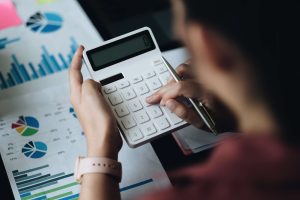Content

While the study’s sample size was small, the results show the therapeutic potential of increasing alpha waves to combat depression. There is some evidence that suggests finding ways to boost these alpha waves may have a number of benefits. Some of the positive effects of boosting alpha waves include lowering stress, reducing anxiety, decreasing depression, and improving creative thinking. The brain is very active during sleep, and each stage of sleep is characterized by the brain waves that accompany it. A technique for measuring the electrical activity of the brain, using a cap with sensors called electrodes, which is worn over a person’s head.
‘SuperAgers’ have larger neurons than people 30–60 years younger – Medical News Today
‘SuperAgers’ have larger neurons than people 30–60 years younger.
Posted: Sat, 08 Oct 2022 07:23:49 GMT [source]
Different patterns of brainwaves can be recognized by their amplitudes and frequencies. Brainwaves can then be categorized based on their level of activity or frequency. Here the brainwaves are of the greatest amplitude and slowest frequency. They typically center around a range of 1.5 to 4 cycles per second.
Sleep Debt and Catching Up on Sleep
They occur when we’re at our most alert and focused state and when we’re in deep concentration. Gamma brainwaves are our fastest brain waves and help us pass information rapidly and simultaneously. We also produce beta waves if we’re talking, teaching, listening, studying, reading, focusing – and most activities and actions we do while we’re awake. Beta waves are our most typical and common rhythm with a low amplitude and fast speed. They occur when we’re awake and focusing on mental or physical tasks. Beta waves are present when we’re solving problems and making decisions.

Throughout the waking hours and during sleep, brain cells constantly communicate with each other through electrical pulses, which create https://wave-accounting.net/. Tests that detect the electrical activity of the brain measure the number of brain waves per second, also called brain wave frequency.
Increasing alpha waves may reduce depression
According to this idea, synchronous oscillations in neuronal ensembles bind neurons representing different features of an object. For example, when a person looks at a tree, visual cortex neurons representing the tree trunk and those representing the branches of the same tree would oscillate in synchrony to form a single representation of the tree. We found that entrainment can safely manipulate brainwaves to improve memory. One of the strengths of this study is that it used two experiments and good control groups for comparisons that ruled out alternative possibilities. For instance, one limitation is that we do not know the minimum amount of time needed for entrainment to work, since we only tested 36 min of entrainment. We also do not yet know how long the memory improvements last, and it is important to note that it has not been tested in kids yet and the flashing lights may not be safe for people who have epilepsy. However, other studies have shown that memory scores can be caused by different brain waves such as theta [1, 3–5].
Inside The Beautiful Mind of Alex Kostich – SwimSwam
Inside The Beautiful Mind of Alex Kostich.
Posted: Fri, 07 Oct 2022 12:35:01 GMT [source]
We characterized phase consistency by measuring each electrode’s instantaneous theta phase and then computing whether each site had a consistent phase shift relative to the cluster overall . All of the theta clusters that we observed exhibited electrodes with significant phase synchrony. Across all clusters, 81% of electrodes exhibited significant phase consistency with the cluster mean. This indicates that our methods reliably identify clusters of hippocampal electrodes that have consistent theta-phase relations. Our next step was to determine whether these synchronized cluster phase patterns exhibit traveling waves. Neural synchronization can be modulated by task constraints, such as attention, and is thought to play a role in feature binding, neuronal communication, and motor coordination. Neuronal oscillations became a hot topic in neuroscience in the 1990s when the studies of the visual system of the brain by Gray, Singer and others appeared to support the neural binding hypothesis.
Progression of theta phase through the hippocampus
Jung MW, Wiener SI, McNaughton BL. Comparison of spatial firing characteristics of units in dorsal and ventral hippocampus of the rat. Cenquizca LA, Swanson LW. Spatial organization of direct hippocampal field ca1 axonal projections to the rest of the cerebral cortex. This work was supported by the National Institutes of Health , the Defense Advanced Research Projects Agency, and the Brain and Behavior Research Foundation. We thank John Burke for help with data processing and Michael Kahana, Andreas Schulze-Bonhage, and Armin Brandt for contributing data. Greater availability of de-identified patient health data would enable better treatments and diagnostics, the researchers say. “It is promising that the effects did seem to persist afterwards,” says Desimone, though more study is needed to determine how long these effects might last. Keen to start a morning routine but struggling with your energy levels in the morning?
- A study published in the journal Translational Psychiatry found that using a technique called transcranial alternating current stimulation to induce alpha wave activity reduced depressive symptoms in people with major depressive disorder.
- For example, while alpha waves are often present right before you fall asleep, they should not happen while you are asleep.
- When studied in a more physiologically realistic setting, oscillatory activity is generally studied using computer simulations of a computational model.
- Research has shown that although one brainwave state may predominate at any given time, depending on the activity level of the individual, the remaining three brain states are present in the mix of brainwaves at all times.
- Lower levels of gamma waves can even lead to learning disabilities and mental disorders.
- Some of these, such as music therapy, also may be modifying basic central nervous system rhythms through entrainment or other means.
In very abstract form, neural oscillations can be analyzed analytically. When studied in a more physiologically realistic Brain Waves setting, oscillatory activity is generally studied using computer simulations of a computational model.
MEMORY AND BRAIN WAVES
For example, when certain areas of the brain are over-aroused, an individual may experience anxiety, nightmares or other sleep problems, impulsivity, and aggression. Too little arousal in the brain, on the other hand, has been correlated with depression, chronic pain, and insomnia. If brain rhythms are unstable, an individual may experience obsessive compulsions, develop epilepsy, or have panic attacks. Sirota A, Montgomery S, Fujisawa S, Isomura Y, Zugaro M, Buzsáki G. Entrainment of neocortical neurons and gamma oscillations by the hippocampal theta rhythm. In another task, participants were asked to look at an image such as a natural outdoor scene, urban scene, or computer-generated fractal shape. By tracking subjects’ eye movements, the researchers found that people spent more time looking at the side that their alpha waves had trained them to pay attention to.
Do gamma waves cause anxiety?
It is responsible for cognitive functioning, learning, memory, and information processing. Prominence of this wave leads to anxiety, high arousal, and stress; while its suppression can lead to Attention Deficit Hyperactivity Disorder (ADHD), depression, and learning disabilities.
Alpha waves again gained interest in regards to an engineering approach to the science fiction challenge of psychokinesis, i.e. control of movement of a physical object using energy emanating from a human brain. In 1988, EEG alpha rhythm was used in a brain–computer interface experiment of control of a movement of a physical object, a robot. It was the first experiment to demonstrate control of a physical object, a robot, using EEG. Alpha waves were discovered by German neurologist Hans Berger, the inventor of the EEG itself.
